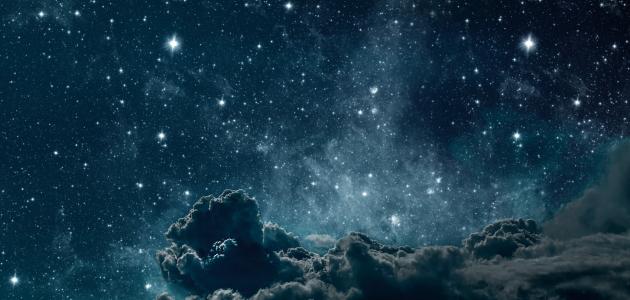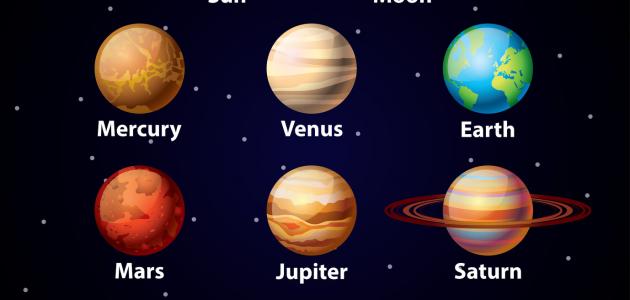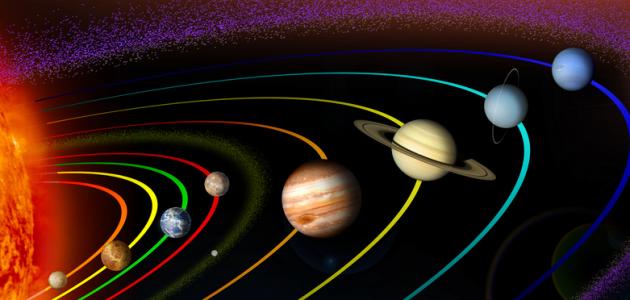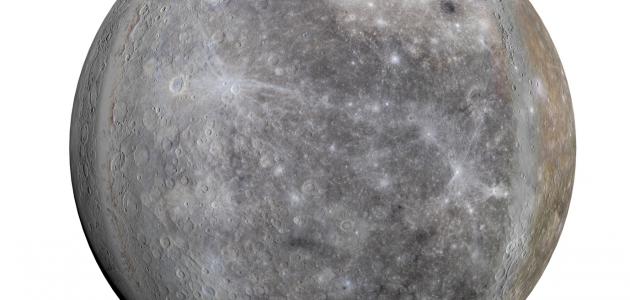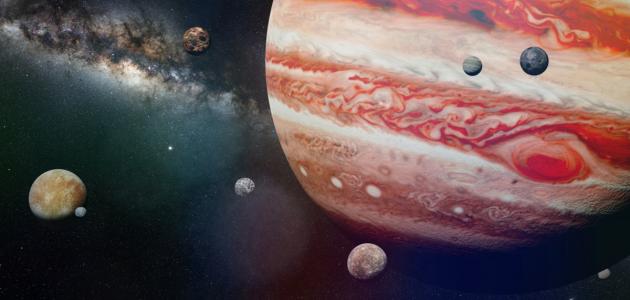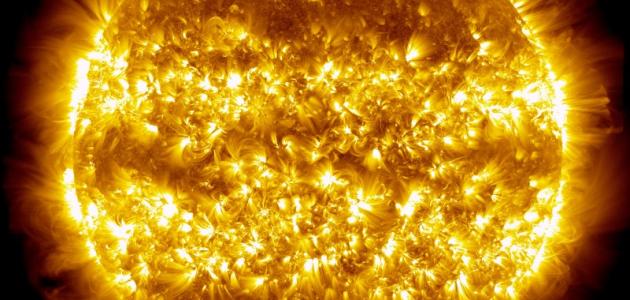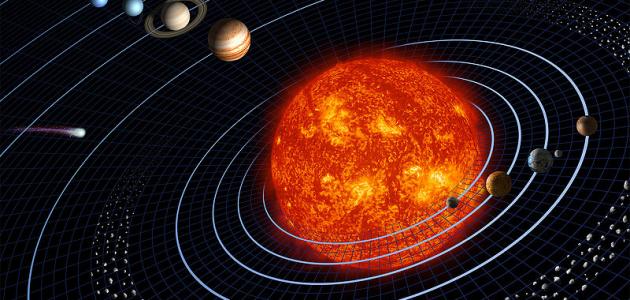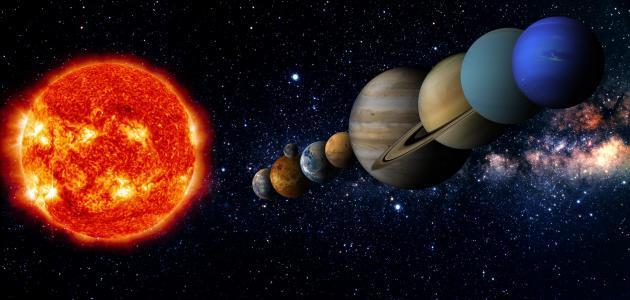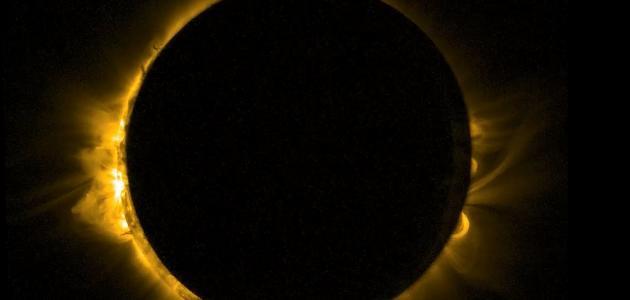Definition of stars
A star is a huge spherical body that derives its luminosity from the nuclear fusion reactions that occur in its core, which results in elements heavier than hydrogen. Astronomers to learn about the distinctive characteristics of each of them, as knowledge of one of the characteristics leads to the identification of other characteristics. By observing the star’s spectrum, its luminosity, and its movement in space, scientists are able to determine its mass, age, and chemical composition, and by knowing the star’s mass, the date of the star can be determined. Its origin, evolution, and final fate, and by knowing the evolutionary history of the star, it is possible to know the diameter of its rotation, its rotation mechanism, and its temperature.
The visible universe contains tens of billions of trillions of stars, but the naked eye can see very few of them, and there are many stars in the universe in the form of pairs, multiple systems, or star clusters that are physically linked to each other through their common origin and attraction to each other. There are also groups of stars known as stellar associations consisting of stars that are physically similar, but their mass is less, which allows them to be sufficiently attracted to each other to form star clusters.
star life cycle
A star goes through several stages during its life, which are as follows:
Read also:Information about the planet Venus- The stage of formation of the nebula (in English: Star-Forming Nebula): The star begins its life as a nebula, that is, a cloud of dust and gas, mostly hydrogen, whose components have gathered together due to gravity.
- Protostar stage: The protostar stage begins when the cloud collapses due to gravity, and its components collide, causing its temperature to rise. When the temperature and density of gases reach an appropriate degree, the nuclear fusion of hydrogen atoms begins to form helium, and the interaction results in heat and light. So the primary star is bright.
- Main sequence stars: At this stage, the external force resulting from nuclear fusion balances with the internal gravitational force, bringing the star to a state of stability or hydrostatic equilibrium. This stage constitutes the longest stage of the star's life.
- Red giant stage: When hydrogen fuel begins to run out from the star's core, the outer layers of the star continue to rush inward; Which raises the temperature of the core enough to start a new series of nuclear fusion reactions, so the external force overcomes the internal gravitational force, and thus the star expands and increases in size and becomes a red giant.
- Star death stage: The longevity of a star and how it dies depends on its size at the beginning of its formation, as a small star can live billions of years, and an example of this is the sun, in which nuclear reactions last for ten billion years, while large stars die quickly, as some live only 40,000 years; This is because it needs nuclear reactions to occur at a huge rate to maintain its hydrostatic balance, which means that its hydrogen fuel runs out quickly, and the method of death of different stars in terms of mass can be described as follows:
- Medium stars: After the hydrogen fuel is completely depleted in medium-sized stars whose mass reaches more than one and a half times the mass of the sun, the temperature of the red giant begins to decrease, and it emits white light, so it is known as the white dwarf (in English: White dwarf), and after the star cools completely, it turns into a black dwarf. (in English: Black dwarf).
- Massive stars: Huge stars whose mass exceeds the mass of the sun from 1.5-3 times from the stage of the red giant to the stage of the supernova (in English: Supernova), where all the heavy elements are subjected to an explosion, and the star turns into a neutron star (in English: Neutron star), which is a star with a mass of 1.4 the mass of the sun, and the neutron star is characterized in addition to the speed of its rotation that it is one of the most dense types of stars, and the neutron star that emits radio waves is called a pulsar (in English: pulsar).
- Giant stars: Giant stars, whose mass exceeds three times the sun, turn from a red giant into a supernova, which in turn turns into a black hole, which is a body with a very high gravity so that no light can escape from it, and the existence of black holes can only be detected. Through the radiation emitted by the objects that absorb it.
star ratings
Stars are classified according to their spectral characteristics into seven degrees expressed using the letters (O, B, A, F, G, K, M). Each spectral type includes ten subcategories bearing numbers from 0-9. This classification is used to indicate the temperature of the stars. the star; The star (O) is the hottest, and the letters that follow it refer to the gradient in coldness, where the star (M) is the coldest. As for the numbers that indicate the sub-categories, they range from 0, which is the hottest, to 9, which is the coldest. The temperature of the star determines its color and the amount of its brightness. The following table shows the classification of star spectra:
Read also:What is the use of stars| spectra of stars | surface temperature | Distinctive characteristics |
|---|---|---|
| O | more than 25,000 Kelvin | It contains hydrogen, neutral helium, and ionized helium. |
| B | From 10,000-25,000 Kelvin | They contain ionized hydrogen and helium, and there is no neutral helium. |
| A | From 7,500-10,000 Kelvin | It contains hydrogen, ionized helium, and calcium ions, and there is no neutral helium. |
| F | From 6,000-7,500 Kelvin | It contains hydrogen and minerals such as calcium ions, iron and others. |
| G | From 5,000-6,000 Kelvin | It contains hydrogen, metals, and some molecules. |
| K | From 3,500-5,000 Kelvin | Contains minerals, and some particles. |
| M | less than 3500 Kelvin | It contains minerals and some particles such as titanium oxide. |
Stars are also classified according to the category of luminosity, as the luminosity of a particular star depends on many factors such as the spectral characteristics of the star, the distance of the star, and the degree of astronomical extinction (in English: the amount of extinction), i.e. the dispersion of the star’s radiation resulting from the presence of some material in the surrounding medium, The luminosity of a particular star describes the size of the star, i.e. the gravitational acceleration in the photosphere. With regard to large-sized stars that belong to a specific spectral type, their surface gravity decreases, which reduces the width of the radiation absorption lines. According to this system, stars are classified as follows:
Read also:Who discovered the spherical Earth| Luminosity category | Description of the star | Notes |
|---|---|---|
| 0 | super giant | Ultra bright |
| Ia | Great giant | Big and bright |
| Ib | Great giant | The illumination is lower than Ia |
| II | shining giant | |
| III | giant | |
| IV | Almost gigantic | |
| V | dwarf | A star in the main sequence stage |
| sd | semi-dwarf | |
| D | white dwarf |
star installation
The stars are described as large flaming balls made up of hydrogen and helium, and due to the stars' heat, the huge amount of hydrogen in them is subject to a constant nuclear reaction, yet the sun needs billions of years to exhaust the hydrogen present in it, and the nuclear reactions lead to the release of huge energy in the form of electromagnetic radiation They can be observed using radio telescopes of the Deep Space Observation Network (DSN). Stars, including the Sun, are distinguished for emitting solar winds, and intermittent explosions known as solar flares or solar flares occur.
The core of the sun consists of a plasma with a temperature of 15 million degrees Celsius consisting of electrons and protons released from hydrogen atoms, and the plasma constitutes 90% of the sun, and every second thousands of protons in the core of the sun collide with each other as part of a nuclear reaction to produce helium nuclei, and these interactions result Nuclear energy or heat is transmitted to the areas surrounding the core by radiation, then it is transmitted to the areas near the outer surface of the sun by convection, so the hot gases rise, then cool down and return down again, and the movement of gas masses causes what is known as solar earthquakes (in English: Sun- quakes) that scientists infer to determine the internal structure of the sun and the processes that occur in different locations under its surface.
A study conducted by astronomer Cecilia Payne in the 90s indicates that the stars' atmosphere consists of a mixture of elements different from those of the Earth's atmosphere, and that most of the atmosphere of most stars is composed of hydrogen, and scientists at that time rejected the results of Payne's study. Until another study confirmed the validity of its findings, it was later concluded that stars consist of 10% hydrogen, XNUMX% helium, and very few heavy elements.
Star rotation
The stars, including the sun, are characterized as not being fixed in place but rather rotating, and the reason for this is that the stars were formed from a cloud of gas and dust that rotates spinning, and since angular momentum (in English: Angular momentum) is a preserved quantity, the stars also spin spinning but they rotate more quickly From the speed of rotation of the cloud that formed it; This is because its moment of inertia is less, which means that its rotation rate is faster.
The sun rotates approximately every 25 days at the equator, and approximately every 36 days near the poles, and the previous two rotation periods differ due to the fluid composition of the sun in contrast to the solid composition of the earth, and the sun rotates in the same direction as the planets rotate around it, which is also the direction of rotation of the original cloud that formed Including the sun, and some stars in the Milky Way galaxy tend to rotate in the direction of the rotation of the galaxy itself, yet the stars rotate in somewhat random directions when looking at them separately.
